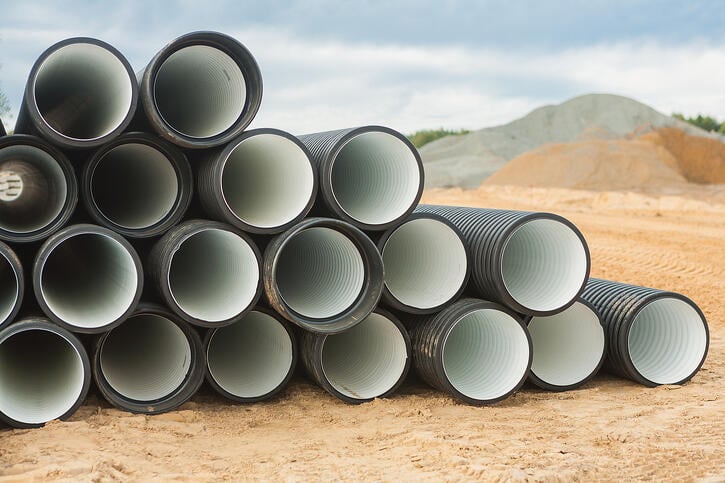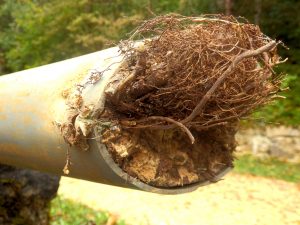How to Hire the Right Emergency Plumbing Company (And Save Money)
Plumbing emergencies can occur when we least expect them. After all, that’s what the emergency is all about. Knowing what to do when there’s an emergency in your house is key to smiling again.
The best course of action is to find solutions to the problem. You need to find an emergency plumber in your city. A plumber you can rely on to quickly attend to your call with urgency.
According to the Design Criteria for Sewers and Watermelons that was released by the City of Toronto, “plumbing emergencies happen all the time. Whether it’s on the kitchen, bathroom, or pipes, attending to it with urgency can prevent further costly damage.”
An emergency plumber should be able to fix problematic sinks, drains, pipes, and toilets — and restore your home as it was before the emergency. There are thousands of plumbers in your city right now, the real challenge is knowing which professional to trust to have a successful outcome.
It’s not enough to choose a plumber next to your house, make sure you analyze their plumbing services. Make sure the plumber you eventually hire actually offers emergency plumbing repair services. A general plumbing company may not get the job done.
You don’t want to risk calling a plumber who will not treat your case with any urgency. Find an emergency plumber in Toronto, CA that offers the exact services you need. This is a great way to narrow down the list of local plumbers that may be vying to do the job.
That being said, here are 8 effective ways (and questions) you should ask an emergency plumber:
- Verify Insurance Coverage
According to Adrian Mak, “Plumbers insurance can provide financial protection for your business if someone is injured by your business or if your business damages property.”
You want to make sure you’re hiring an emergency plumbing company that has insurance coverage.
Most plumbing companies will carry two kinds of insurance:
- Workers’ compensation insurance
- Liability insurance
So you should ask about these two types of insurance coverage before moving forward. If you’re wondering what the difference is, here it is in a nutshell:
Workers’ compensation is a type of insurance coverage that attends to works who are injured while executing their duties at work. There should be adequate payout provisions for them.
Liability insurance coverage, on the other hand, covers the plumbing professional for damages that his team caused on your home or belongings while performing their duties. If an insurance company causes any form of damage to your home, you can capitalize on the liability policy to get the necessary backup and repairs.
It may not seem necessary to check for insurance coverage with a plumbing company you’re hiring to do emergency repair services, but you should do it to save both the plumber, the workers, and your home.
Emergency plumbing repairs require urgent action, which could lead to unintended consequences if the plumber isn’t experienced or lacks the right tools for the repairs.
Cost may be the only factor you might want to reconsider when asking about insurance coverage from your plumbing company.
This is because it’ll be more expensive when you hire a plumber with insurance coverage than plumbers that don’t have it. But the added cost will be well worth it there’s a damage on your home/property or the workers get injured.
- Ask Around For Recommendations
If you don’t have a reliable plumbing company to call, you should ask around for recommendations from family members, neighbors, co-workers, and friends.
If you know or have heard good things about a local plumber who provides reliable results, you can consult them as well.
Recommendations from those you know are invaluable because they’re often unbiased and objective.
So you’ll be given all the pertinent information from the person recommending the professional to you. When this happens, you’ll be able to know firsthand what you can expect in terms of pricing, overall efficiency, and above all, customer service.
- How is the Pricing Determined?
Another factor that will guarantee that you hire the best emergency plumber in your city is the pricing model. Is it hourly or fixed? Since the average cost to hire a plumber is between $125 – $350, it’s best to know how this works out hourly or otherwise.
Sometimes, a friend or co-worker can refer a reputable emergency plumber to you. This might be the best way to get access to plumbers who can get the job done the first time.
A plumber may offer both hourly and fixed pricing structures but it all depends on what the client wants. The best way to save some money, though, is to stick with fixed pricing. Because if a plumbing company estimated that the project could take 2 hours to fix, what’s the guarantee they’ll deliver an excellent result?
You want to avoid surprise bills when the repair job is completed. If the plumbing company you hire insists on an hourly pricing structure, ask him/her, in their experience fixing emergency damages, how long your project should take.
An experienced plumber should be able to give a good estimate of the time after a proper inspection of the damage. If the repair is obvious, (i.e., the pipes are accessible) you might want to stick to hourly pricing structure — otherwise, insist on a fixed rate.
- Licensing
Before you hire an emergency plumbing company, you need to ask the plumber if they have the necessary licenses to practice. Although it depends on your state or city because not all states require licenses to operate.
If the plumber doesn’t carry a license, ask why. Often, a plumbing company that has a license is certified and you can be sure they have passed a state examination.
However, a license will not get the repair excellently executed. That’s why you must never be fooled by it. What a business license simply means is that the plumber is eligible to practice in your state or city.
Above all, make sure the license isn’t just for any type of business but for professional plumbing practice.
- Know the Estimated Total Cost of Fixing Your Plumbing Problem
When you have found a reliable emergency plumber, it’s time to know firsthand what the total cost will be.
We talked about knowing the pricing structure earlier, so if it’s hourly, how many hours will it take to repair the damage. And how much do they charge per hour?
As a homeowner, don’t completely rely on quotes you receive over the phone or via email. A trusted and reputable plumbing company will likely not give you a quote until they have properly inspected the problem.
They want to know if it’s piping-related or a clogged sink. It’s always better to hire an experienced plumber because they’ll often include the cost of new parts needed for the repair.
Don’t just assume they’ll get the job done based on the quote they sent you, you must confirm with the plumber if the price estimate includes both parts and labor cost.
- Warranties and/or Guarantees For the Repairs
How long will the repair work last? An experienced plumber should be able to make guarantees with a few exceptions. After the repair is completed, a plumber that stands behind what they have done will not be afraid to offer warranties and/or guarantees for their work.
If they’re scared to do that, then it’s obvious they don’t even trust their expertise in emergency repairs. Both for labor and material (parts used in the repairs), there should be a warranty.
A homeowner needs to have that peace of mind after spending money on emergency plumbing repairs. A warranty or guarantee of up to 12 months is expected. However, it all boils down to the level of damage, and whether or not a part of the plumbing system was replaced or repaired.
If the plumber or company you speak to doesn’t offer any warranties and/or guarantees for their work, it’s a sign you should pass on that plumber or company.
You should only work with those plumbers that give a cast-iron guarantee and/or warranties for their work.
- Are There Any References?
What do clients say about the plumbing company you want to hire. If you found them online, you need to read up a few reviews to know whether their past clients were happy or regretful.
A reputable emergency plumbing company that has been in the trenches for years will have garnered lots of references, comments, testimonials, success stories, and ratings from homeowners and clients.
So, it’s important to hear what other people think about the professional you intend to hire. Past clients are in a better position to describe the quality of their customer service, how efficient they are, and how they respond in case something happens after the repair is done.
Reputable plumbers like to talk about their clients even before you ask them. Because they know that new clients will be thrilled to experience the same treatment as happy clients. If you want to do a little digging, then you can look up their name or company name online to find customer reviews and ratings.
When a professional plumber isn’t excited about giving you a list of references to contact (if you want to), you should see this as a red flag. You might want to look elsewhere for an emergency plumber.
Conclusion
With a plethora of plumbing companies in Toronto, it’s becoming more difficult to find a reliable and efficient plumber to handle your emergency repair services.
Every aspect of a plumbing system is delicate and must be handled by a professional — otherwise, it could lead to the collapse of your entire plumbing system.
It’ll cost you a lot more money to fix the damage before getting to the main emergency work. That’s why you should carefully choose wisely. You can call us if you need an emergency plumbing services.
This post first appeared on https://blog.antaplumbing.com

 Clogged Drains
Clogged Drains People often groan when they hear about “annual maintenance” for almost any part of their house. Yes, we know that maintenance seems like a chore—but the benefits are tremendous. For example, the plumbing in your house undergoes an immense amount of work and strain during the year. All those drains, pipes, and appliances don’t simply hold up no matter what gets thrown at them. They wear down, and that means inconvenience, costly repairs, expensive replacements, and maybe even plumbing disasters like flooding or not having any water at all.
People often groan when they hear about “annual maintenance” for almost any part of their house. Yes, we know that maintenance seems like a chore—but the benefits are tremendous. For example, the plumbing in your house undergoes an immense amount of work and strain during the year. All those drains, pipes, and appliances don’t simply hold up no matter what gets thrown at them. They wear down, and that means inconvenience, costly repairs, expensive replacements, and maybe even plumbing disasters like flooding or not having any water at all.
 Of course, any issue with your plumbing system can seem like a pretty big deal. However, not many are quite as problematic as a slab leak. You see, these leaks can go months and months before they’re detected, and once they are, they have usually caused a significant amount of damage!
Of course, any issue with your plumbing system can seem like a pretty big deal. However, not many are quite as problematic as a slab leak. You see, these leaks can go months and months before they’re detected, and once they are, they have usually caused a significant amount of damage! Contrary to what the title might make you believe, this is not a children’s book. This is a blog post with the hope of informing you about the possible problems that could be causing your slow drains. There are some big differences between different types of slow drains, and it’s pretty important not to misdiagnose the problem with your plumbing.
Contrary to what the title might make you believe, this is not a children’s book. This is a blog post with the hope of informing you about the possible problems that could be causing your slow drains. There are some big differences between different types of slow drains, and it’s pretty important not to misdiagnose the problem with your plumbing. One of the most effective ways to avoid the need for
One of the most effective ways to avoid the need for  Quick and Convenient
Quick and Convenient
